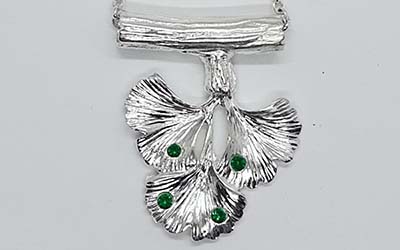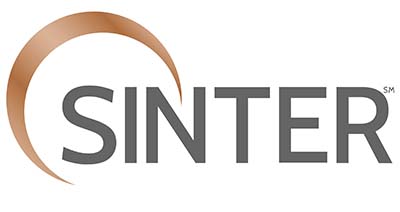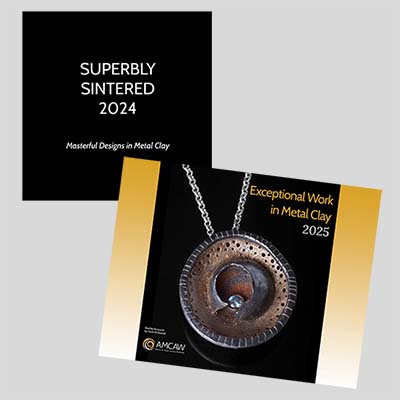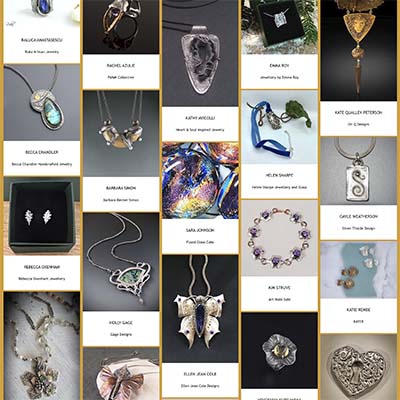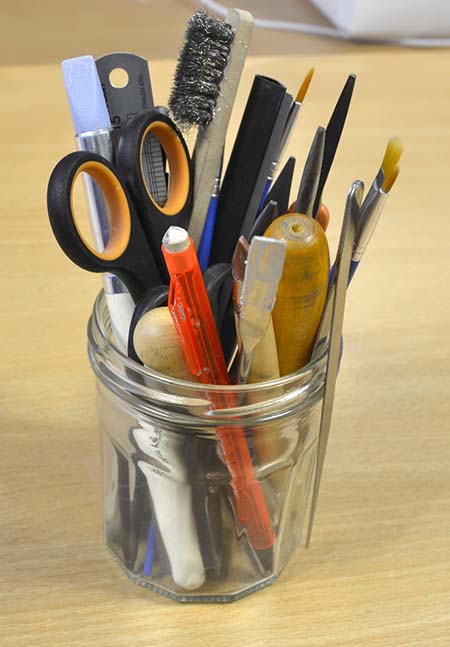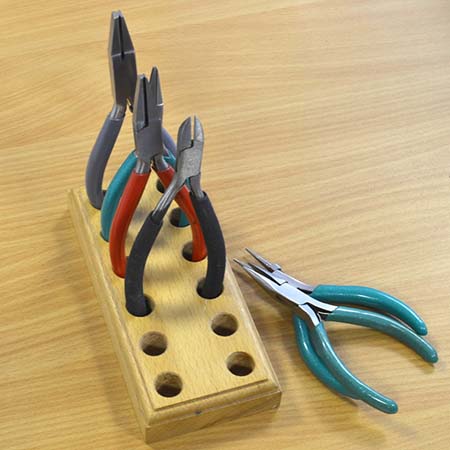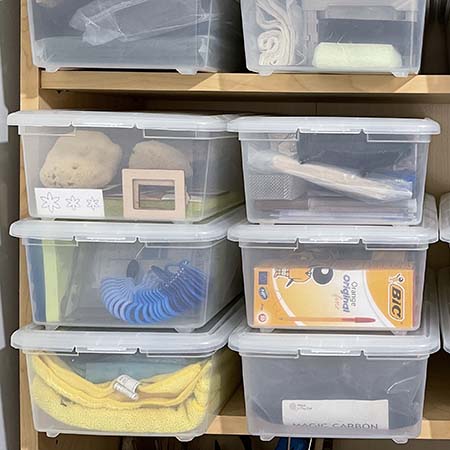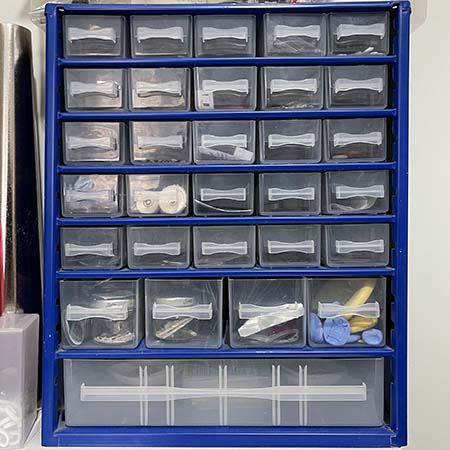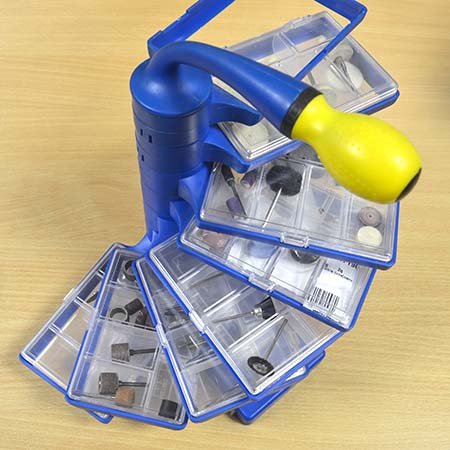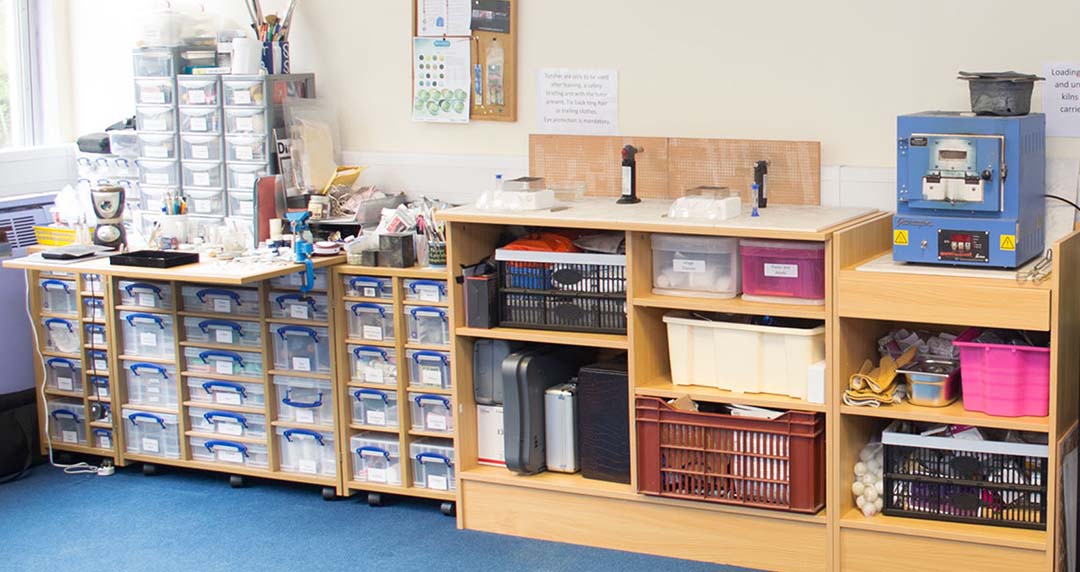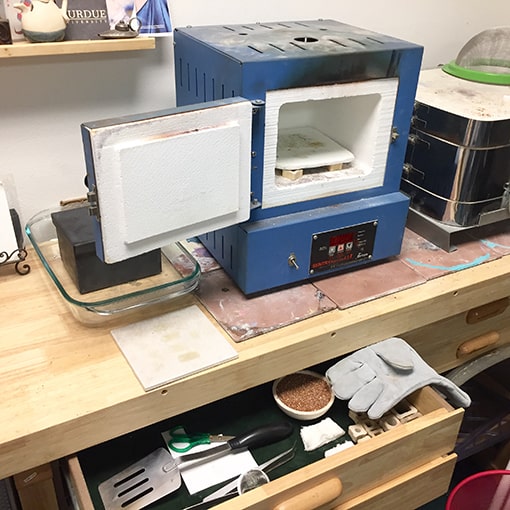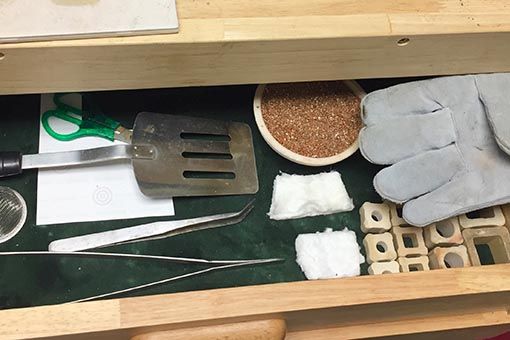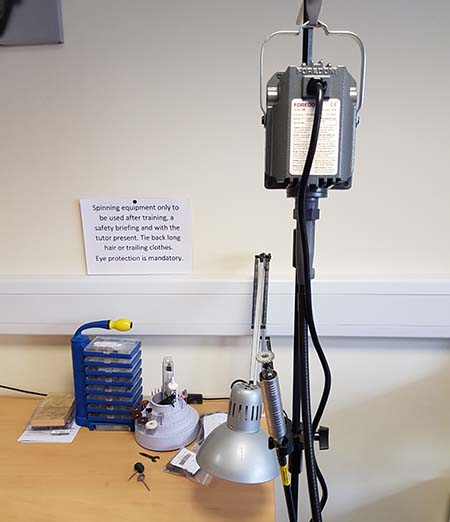Kiln and kiln tool storage
Electric kilns used for metal clay are safe to keep at home. Normal safety precautions around keeping them away from flammable materials, gas tanks and from children and animals should be followed. There are a number of tools you may use with your kiln. The main ones are sometimes referred to as kiln furniture which consists of shelves and posts or risers that allow you to stack shelves in your kiln. If you enamel, you may also have trivets or steel mesh stands which need to be stored. A simple box can be used to contain these tools and if your kiln stands on a metal or wooden trolley with shelves underneath, this keeps everything in one place.
If you work with the base metal clays, you will normally have stainless steel or ceramic containers filled with carbon for firing. The carbon forms ash during firing and this needs to be removed outside in the open air, normally by tipping it backwards and forwards between two containers, so the ash blows out. Always wear a dust mask when doing this.
A funnel can be a useful tool when working with the carbon, especially if you have smaller containers for firing. The carbon can be very messy so keeping it contained will help to maintain a clean work area. Fresh carbon normally comes in a plastic bag so keeping all these elements together in a closed box will help to contain everything cleanly.
Metal clay pieces often need additional support during firing, and this requires something like fiber blanket, vermiculite or alumina hydrate. A fiber blanket gets brittle and begins to shed fibers as it is used over and over. Keeping it contained is important to avoid having harmful fibers in the air, especially in your home so store it in a plastic bag or a lidded box. Alumina hydrate is also harmful if breathed in so it should be stored safely in a closed container and always put away after use.
Other tools that you may have for hot work are large tweezers, tongs, spatulas, heat proof gloves, eye protection etc. Barbeque tools work well for getting things in and out of a hot kiln but ensure you buy gloves specifically for the higher temperatures generated during sintering. A heat proof apron may also be useful if you are enamelling regularly and opening the kiln frequently. The tools can be stored in a box or standing in a large pot or jar near the firing area for easy access, especially in emergencies.


